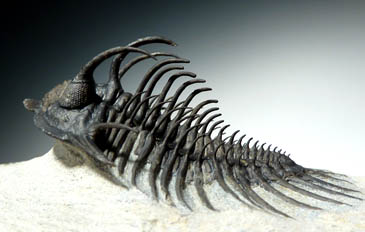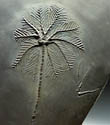Shop by Brand
INVERTEBRATES
Invertebrate Fossils For Sale
PRECAMBRIAN PERIOD to PLEISTOCENE: 600 million years to 10,000 years ago
 Fossil of invertebrates are vast and encompass most of the fossils of former life on our planet. Many of the fossils offer a window into the world of bizarre creatures that defy explanation. Because most of the creatures were very fragile and small, having a permanent record in stone of their past life is a fascinating fossil to collect. In some rare instances, even soft tissue can be found preserved in some invertebrate fossils!
Fossil of invertebrates are vast and encompass most of the fossils of former life on our planet. Many of the fossils offer a window into the world of bizarre creatures that defy explanation. Because most of the creatures were very fragile and small, having a permanent record in stone of their past life is a fascinating fossil to collect. In some rare instances, even soft tissue can be found preserved in some invertebrate fossils!
We offer numerous AUTHENTIC fossils of invertebrates for sale, all prepared by us in our on-site lab just like every major museum does. This is important because in doing so, we can ensure their authenticity and nature of all work performed in the process. Every invertebrate fossil we sell includes a written lifetime guarantee of authenticity & condition report / history sheet.
For over 3.5 billion years, life has been growing, dividing, changing and developing into a myriad of forms. One factor about all life on Earth that has remained constant though, is that Invertebrates or creatures without an internal skeleton, have always outnumbered the quantity of life forms in existence at any one time right up until today. Invertebrates were the very first complex forms of life. As in the past and still today, invertebrates are so vital that without their existence, our entire planet and nearly all of its ecosystems would cease to function!
 Much of Earth's life history has been relatively uneventful with roughly the first three billion years only consisting of life forms that were simple single-cell organisms like bacteria and algae. At times, these organisms amassed into colonies called Stromatolites but nothing more. About 600 million years ago, complex multi-cellular organisms similar to jellyfish, emerged.
Much of Earth's life history has been relatively uneventful with roughly the first three billion years only consisting of life forms that were simple single-cell organisms like bacteria and algae. At times, these organisms amassed into colonies called Stromatolites but nothing more. About 600 million years ago, complex multi-cellular organisms similar to jellyfish, emerged.
Then, approximately 530 million years ago during the Cambrian Period, an event took place in life's history that has never been repeated. An incredible diversity of life forms 'exploded' on the scene in abundance. This occurrence is called the 'Cambrian Explosion' and also marked the emergence of animals with hard external skeletons like trilobites. Rumbling the foundation of macroevolution's theory is the intricacy and sheer numbers of life forms that suddenly 'appeared' on our planet compared to the crude and simplistic organisms that existed prior. The Cambrian Explosion is one of the greatest mysteries to paleontologists as well as evolutionists.
Unlike vertebrates, invertebrates never developed a bone or cartilage internal skeleton. They also lack a cranium, nerve chord brain or hard brain case. Invertebrate fossils of soft-bodied creatures is rare but does exist. Certain fossil-bearing deposits have revealed amazingly fine-detailed anatomy of prehistoric soft-bodied invertebrate life-forms such as those found in the Burgess Shale of Canada or Hunsruck Shales of Germany. More commonly found invertebrate fossils are those of hard-bodied creatures such as crustaceans.
Today, the animal kingdom has a little over a million described species comprising 32 phyla. The phylum of Arthropoda (insects, spiders, centipedes and crustaceans, for instance) alone make up 82% of all known species of life on Earth. If we include all invertebrates (excluding bacteria and virii), we now are talking about 94% of known species! ALL vertebrates (creatures with internal skeletons and backbones) comprise only 3% of all known species on our planet. Despite their size, INVERTEBRATES are truly the "heavyweights" on our planet!
 US DOLLAR
US DOLLAR
 EURO
EURO
 AUSTRALIAN DOLLAR
AUSTRALIAN DOLLAR
 CANADIAN DOLLAR
CANADIAN DOLLAR
 POUND STERLING
POUND STERLING
